When we mentioned our impending trip to Ahmedabad, two of our friends immediately asked us whether we were planning to visit Lothal. Upon asking what that was, they mentioned that it was a Harappan site. That immediately interested me. I had thought that most of the Harappan sites were in Pakistan. But it turns out that post independence, the Government of India has invested a lot of money to excavate sites on this side of the border. I think this is great.
I am quite fascinated by archaeology and this was the first site I would be visiting. To be honest the expectations were pretty high. We rented a cab on our third day in Ahmedabad and headed out to Lothal. We started early and the weather was still pleasant. But we hadn't factored in the afternoon heat into this trip. And we also had no idea what the terrain was going to be like. You can say that we could have done a better job researching about the site. In the hindsight, I agree. But then we were kind of living by the moment. Not the best decision for sure.
The drive itself was very pleasant. Roads were more or less okay. They could be better though. What I really enjoyed on the way was the water-filled fields on both the sides of the road. There were many Ibises, Egrets, and Painted storks around. I think I also spotted a woolly necked stork. With good music to accompany us, the mood was set for some serious exploration.
After driving on highway for over an hour and a half, we now entered a narrow, yet pretty road that took us through the fields, towards Lothal. This was an amazing experience. Our driver was a young fellow who was as enthusiastic as us about everything. It was irritating at times, but was definitely better than having a dull driver. This guy also seemed to enjoy every song that we played. In fact, at times he sang along with the songs as well.
Soon we reached the site. At first, we thought that it was closed. There was absolutely no one around. There was a stone building standing and an enclosed area that looked very much like a parking. Soon we started seeing signs of life. Some laborers emerged from an area that was marked as the excavation site. Soon a bus drove up into the complex and about a dozen American Tourists disembarked from it. And soon the place was buzzing with life. We went to the ticket counter and were surprised to find that it was just Rs. 5 per person. And that Rs. 5 was just for the museum. The entry to the excavation site was free of charge.
Anyhow, we decided to visit the museum first and it was amazing. There were engraved seals from thousands of years ago, and stones that they used for weights. There were ornaments and vases and a whole lot of information about the people who built this city. Apparently these people came from various parts of the world and settled here. Along with themselves, they brought cultural influences from other parts of the world. People of Harappa contributed a lot to the growth of human civilization. Just one look at the excavation site tells you how well planned their cities were.
They had drainage system, markets, irrigation system, and even a dock that was connected to the nearby Sabarmati river that was connected to the sea when the erstwhile Kutch desert was a part of the Arabian Sea. Yes, this is how far back this civilization goes. There was controversy about this claim. Some archaeologists argued that the "dock" was just an irrigation tank. However, that controversy was settled after shells and remains of other sea creatures were found during the excavation.
Religion was an interesting aspect of these people. Most of them seemed to have worshipped a fire god, others the Mother Goddess. This implies that these people had diverse religious beliefs. Then there's also the matter of how they disposed of their dead. During excavation, archaeologists have found graves with human remains. They have also found signs of burials of cremated remains. The most interesting discovery was however of twin burials. The Harappans seemed to have practiced double burials in some cases. Graves containing remains of two people have been found. These could either have been a couple or master and a dependent. And it is also not clear whether the dependent or wife was sacrificed on the master's/husband's death or the deaths occurred at the same time.
We were quite amazed by the kind of art human beings were capable of creating thousands of years ago. The civilization seems to be quite advanced. It seems incredible that if these people were able to create these beautiful things and such sturdy infrastructure so long ago, then the pace of development seems to have slowed down now. Not many people would agree with me, but I feel that considering where these people were in their times, human beings should have made so much more progress by now.
Apparently, Lothal is just one site in this area. There are hundreds of smaller sites spread out in this area. We spoke to the gentleman who was guiding the group of American tourists and he informed us of this. The American tourists were enthusiastic but a few were quite obnoxious. They seemed to discredit everything that ASI has put together in this site. They were incredulous that this site was indeed a part of Harappan civilization. But their guide was pretty patient with them, and wasn't trying too hard to dispel their doubts. I kind of liked this approach.
It is quite incredible to see that even at those times, people knew how to make fire-baked bricks. The fact that they thought of sanitation is quite incredible, considering that even today the government has to run a campaign to make people build toilets in their homes. Exactly at what point in history, did we take the first wrong turn that led us from then to now?
We spent about an hour at the site, but it was too hot to stay out for too long, so we had to return. But while I was there, I could imagine how beautiful it would be let's say during monsoon after it had rained for some time. It would probably have been an entirely different experience. This too was not bad, but we chose to the wrong time to visit the site.
Related Blogposts -



















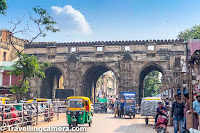
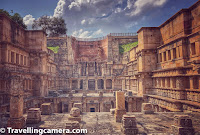

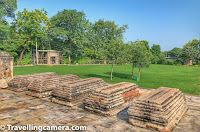
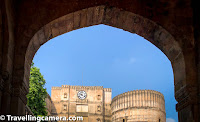
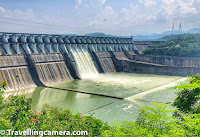


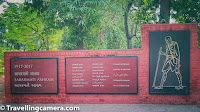
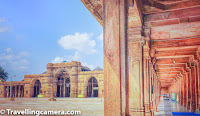

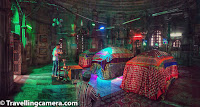

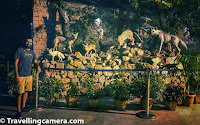

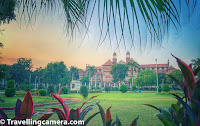
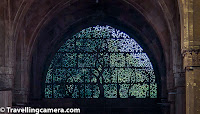
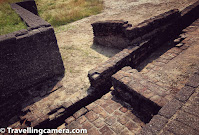

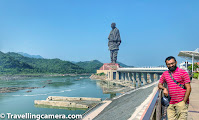

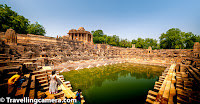

.jpg)
Comments